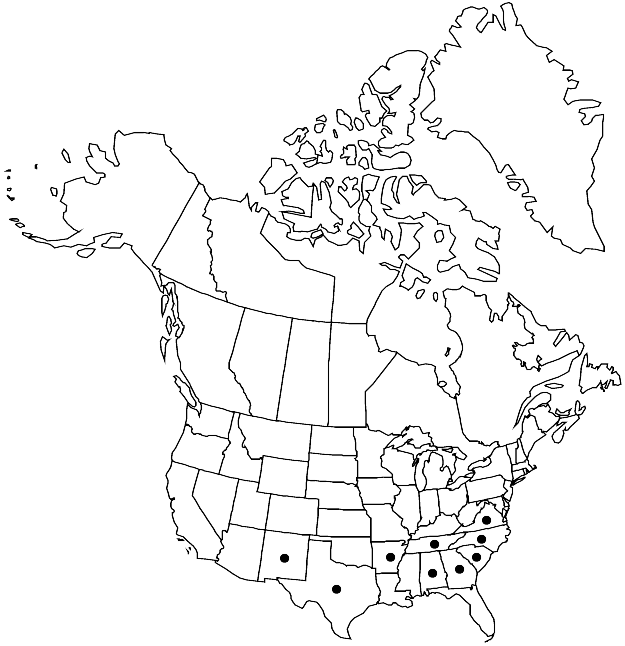Entodon sullivantii
Contr. Fl. Crypt. As., 233. 1873.
Plants in thin mats, green to yellow-green. Stems to 6 cm, subpinnate, branches terete-foliate, sometimes appearing somewhat complanate-foliate. Leaves erect, oblong-ovate, 1.8–2 mm; margins plane, entire proximally, serrulate distally; apex acute to gradually short-acuminate; ecostate or costa double, short; alar region ± abruptly differentiated, 1-stratose, not reaching costa. Sexual condition autoicous. Seta reddish, 1.4–1.7 cm. Capsule cylindric, 2–2.7 mm; annulus 3-seriate, persistent; operculum obliquely rostrate; exostome teeth brown, external surface cross-striolate proximally, papillose to smooth apically, not perforate; endostome segments smooth to lightly roughened. Spores 10–13 (–19) µm.
Habitat: Rock in moist hardwood forests
Elevation: low to moderate elevations
Distribution

Ala., Ark., Ga., N.Mex., N.C., S.C., Tenn., Tex., Va., Mexico (Michoacán), e Asia
Discussion
Entodon sullivantii is one of the rarest species of the genus, and one of the few that most commonly grows on rock. The species is characterized by essentially terete-foliate branches (sometimes not overly obvious), reddish setae, cross striolate exostome teeth, and smooth endostome segments. The capsule is usually somewhat wrinkled when dry and empty.
Selected References
None.